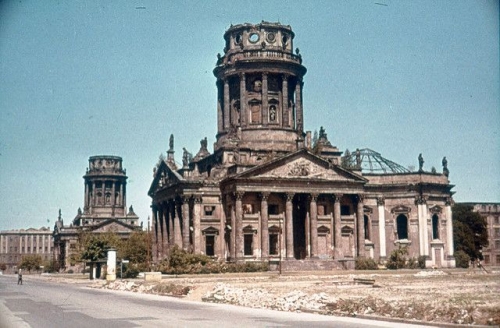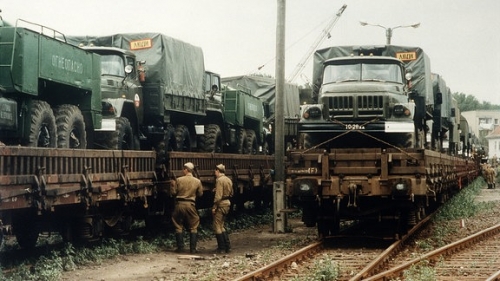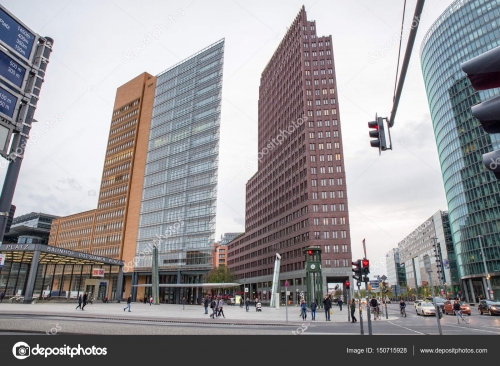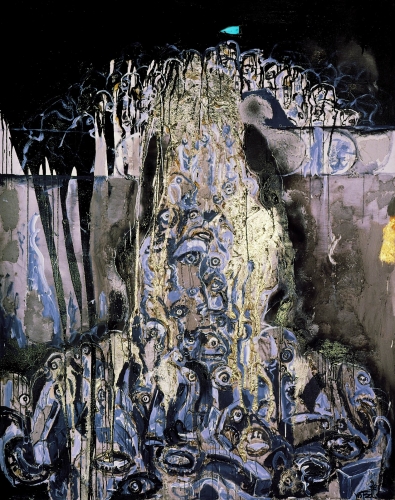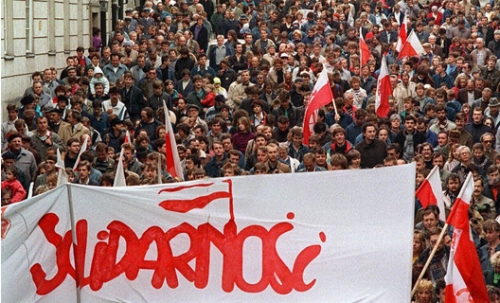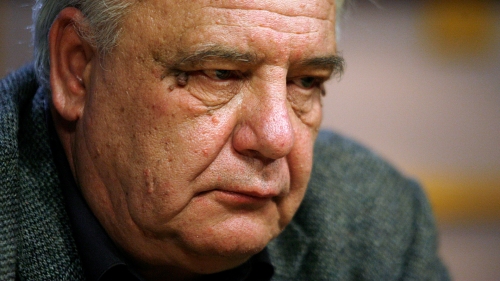Intervista con Niccolò Rapetti
Ex: https://ragionipolitiche.wordpress.com
La complessità e la irriducibilità a formule del pensiero politico di Carl Schmitt sono immediatamente evidenti guardando alla sua travagliata fortuna scientifica. Si tratta innanzitutto di un reazionario cattolico, un conservatore compromesso nel regime hitleriano; negli anni però la sua critica anti-imperialista e anti-liberale ha iniziato a piacere molto anche alla sinistra e pur nel suo evidente anti-americanismo il suo libro Il nomos della Terra è oggi lettura obbligata per gli ufficiali di marina americana. Professor Carlo Galli, mi viene spontanea una domanda: di chi è Carl Schmitt?
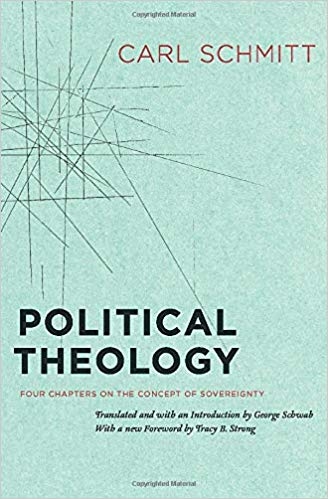 È un grande giurista del diritto pubblico e del diritto internazionale, che ha avuto il dono di un pensiero veramente radicale, e la sorte di vivere in un secolo di drammatici sconvolgimenti intellettuali, istituzionali e sociali. Ciò ne ha fatto anche un grande filosofo e un grande scienziato della politica; e lo ha esposto a grandi sfide e a grandi errori.
È un grande giurista del diritto pubblico e del diritto internazionale, che ha avuto il dono di un pensiero veramente radicale, e la sorte di vivere in un secolo di drammatici sconvolgimenti intellettuali, istituzionali e sociali. Ciò ne ha fatto anche un grande filosofo e un grande scienziato della politica; e lo ha esposto a grandi sfide e a grandi errori.
È innanzitutto necessario chiarire la posizione di Schmitt nella storia delle idee e del diritto: Carl Schmitt è «l’ultimo consapevole rappresentante dello jus publicum europaeum, l’ultimo capitano di una nave ormai usurpata». Che cos’è lo jus publicum europaeum? Come e quando inizia il suo declino, che Schmitt attraversò «come Benito Cereno visse il viaggio della nave pirata»?
Lo jpe è l’ordine del mondo eurocentrico della piena modernità; un ordine che è anche Stato-centrico, al quale Schmitt sa di appartenere anche se è ormai in rovina. Un ordine, per di più, che egli stesso decostruisce, mostrando che si fondava sul disordine, cioè non solo sull’equilibrio fra terra e mare ma anche sulla differenza di status fra terra europea e terre extra-europee colonizzate. Il declino di quell’ordine nasce quando si perde la consapevolezza della sua origine di crisi: quando l’uguaglianza formale fra Europa e non-Europa viene affermata nelle teorie (gli universalismi dell’economia, del diritto, delle teorie politiche democratiche e della morale) e nella pratica (l’imperialismo delle potenze anglosassoni, la loro – interessata – esportazione del capitalismo e della democrazia). Cioè per Schmitt dai primi anni del XX secolo.
Come si coniugano gli elementi «febbrilmente apocalittici» (teologia) e quelli «causticamente razionali» (diritto) nel pensiero politico di Carl Schmitt? In che posizione si trova il giurista Schmitt nei confronti di tecnica e teologia, diritto positivo e katechon?
Schmitt non è un apocalittico in senso proprio, nonostante sia così interpretato da Taubes. La teologia è, nel suo pensiero, un punto di vista, sottratto all’immanenza moderna, a partire dal quale comprendere diritto e politica, e le loro dinamiche. La teologia non ha la pretesa di essere una sostanza fondativa (Schmitt non è un fondamentalista) ma è anzi la consapevolezza dell’assenza di sostanza (di Dio), nell’età moderna. Questa assenza, che Schmitt reputa irrimediabile, è la spiegazione del fatto che la modernità è instabile, e che il suo modo d’essere è l’eccezione: questa richiede la decisione perché si possano formare ordini, e continua a vivere dentro gli ordini e le forme, che quindi non possono mai essere chiusi, razionali, neutralizzati. Da ciò deriva anche l’importanza del potere costituente, ovvero dell’atto sovrano che fonda un ordine a partire da una decisione reale sull’amico e sul nemico. E da ciò anche la tarda insistenza sulla terra (sulla concretezza spaziale) come possibile fondamento stabile degli ordini.
Considerando la distinzione politica fondamentale Freund-Feind, che opinione può avere Schmitt di tendenze fondamentali del suo e del nostro tempo, universalismo e pacifismo, che escludono per definizione l’idea di nemico?
 Schmitt pensa – e lo spiega in tutta la sua produzione internazionalistica, dal 1926 al 1978 – che ogni universalismo e ogni negazione della originarietà del nemico siano un modo indiretto per far passare una inimicizia potentissima moralisticamente travestita, per generare guerre discriminatorie. Per ogni universalismo chi vi si oppone è un nemico non concreto e reale ma dell’umanità: un mostro da eliminare. Perché ci sia pace ci deve essere la possibilità concreta del nemico, non la sua criminalizzazione, secondo Schmitt.
Schmitt pensa – e lo spiega in tutta la sua produzione internazionalistica, dal 1926 al 1978 – che ogni universalismo e ogni negazione della originarietà del nemico siano un modo indiretto per far passare una inimicizia potentissima moralisticamente travestita, per generare guerre discriminatorie. Per ogni universalismo chi vi si oppone è un nemico non concreto e reale ma dell’umanità: un mostro da eliminare. Perché ci sia pace ci deve essere la possibilità concreta del nemico, non la sua criminalizzazione, secondo Schmitt.
Dopo aver annunciato la morte dello Stato nel saggio Il Leviatano di Hobbes, Schmitt teorizzò un’alternativa al potere statale, adeguata alla nuova concezione globale del pianeta che conservando la natura plurale del politico, potesse compiere la grande impresa «degna di un Ercole moderno»: domare la tecnica scatenata. Stiamo parlando dei Grandi Spazi, la cui formulazione è contenuta nella conferenza L’ordinamento dei grandi spazi nel diritto internazionale scritto nel 1939. Ce ne può parlare?
Il Grande Spazio, o Impero, è la risposta di Schmitt al Lebensraum nazista. Non ha caratteristiche biologiche, ma è in pratica la proposta di egemonia di una forma politica all’interno di uno spazio geografico-politico in cui continuano a esistere altre forme politiche non pienamente sovrane. Il GS è più che una sfera d’influenza, perché è gerarchicamente organizzato al proprio interno e perché è chiuso a influenze esterne; ed è diverso dallo Stato perché non è del tutto omogeneo giuridicamente: perché non è un «cristallo». I GS sono i soggetti di una concezione plurale delle relazioni internazionali; le due superpotenze del secondo dopoguerra, invece, per Schmitt erano due universalismi (capitalismo e comunismo) in lotta fra di loro e in instabile equilibrio.
Negli interrogatori dell’immediato dopoguerra Schmitt difese strenuamente la propria concezione del nuovo ordinamento spaziale chiarendone la differenza rispetto alla vera dottrina politica del Terzo Reich cioè lo spazio vitale razziale-biologico. È però indubbio che nel grande spazio come pensato da Schmitt si annidi un antisemitismo coerente con ciò che è condizione sine qua non della teoria: un rapporto forte e concreto tra etnia-popolo e terra civilizzata. Il nemico quindi, per Schmitt, non è l’ebreo in quanto Un-mensch (sotto-uomo, razza inferiore), ma l’«ebreo assimilato» che si pone come elemento sradicante della territorialità e della concretezza di una cultura. Dove sta allora la verità, che cosa direbbe sull’imputato e sull’imputazione: ideologia o scienza?
In Schmitt ideologia e scienza non sono distinguibili: ogni scienza è orientata, storica; è affermazione di un ordine concreto, oltre che ricostruzione genealogica degli ordini. L’antisemitismo, poi, è presente in tracce più o meno evidenti in buona parte della filosofia tedesca – da Hegel a Schopenhauer, da Marx a Heidegger –, in forme diverse e con significati diversi; nei grandi filosofi non è mai determinante – ovvero, non è il motivo che dà origine al filosofare –: l’ebreo è utilizzato come un esempio di non-appartenenza, di individualistico sradicamento, di coscienza infelice e al contempo aggressiva. Il capitalismo, il socialismo e la tecnologia sono spiegati anche (certo, non soltanto – soprattutto nel caso di Marx –) attraverso l’ebraismo, insomma. Questo atteggiamento – che è presente con forse maggiore virulenza anche nella destra francese – è ai nostri occhi gretto, insensato, pericolosissimo e tendenzialmente criminale. Schmitt, come persona, è stato antisemita in seguito al suo cattolicesimo (una delle fonti dell’antisemitismo in Europa; ma anche Lutero era violentemente antisemita), senza però che l’antisemitismo fosse particolarmente rilevante o importante nel suo pensiero; la sua adesione al nazismo, che a suo tempo ha sorpreso tutti, non è dovuta all’antisemitismo ma a un misto di disperazione (per la caduta di Weimar, che aveva cercato vanamente di salvare), di orgoglio (la pretesa di poter guidare il nazismo verso un pensiero «civilizzato» e verso la soluzione della crisi dello Stato) e di ambizione (la chiamata in cattedra a Berlino, la vicepresidenza della associazione dei giuristi tedeschi, il ruolo tecnico rilevantissimo nella stesura di alcune leggi costituzionali come quella dei «luogotenenti del Reich» – 1933 –, la nomina a consigliere di Stato prussiano). Data la struttura radicale del suo pensiero, cioè dato il nichilismo che dopo tutto vi alberga e che gli impedisce ogni valutazione di carattere morale, e dato anche il suo precedente larvato antisemitismo, Schmitt non ha avuto remore nell’adeguarsi all’antisemitismo nazista – ben diverso da ogni altro – che pure non gli apparteneva, e che ha prodotto effetti terribili e grotteschi nei testi da lui scritti dal 1933 al 1936 (anno della crisi del suo rapporto con il regime), con alcuni strascichi nel libro hobbesiano del 1938 e nei testi «segreti» del primo dopoguerra (in realtà scritti per essere pubblicati postumi). In generale, per lui l’ebraismo è un altro nome del liberalismo (il problema è che nella fase nazista è trattato come la causa del liberalismo). La responsabilità politica, morale e storica è tutta sua; gli studiosi devono sapere che la forza del suo pensiero sta altrove, e al tempo stesso devono sapere che quel pensiero è indifeso davanti a questo tipo di aberrazioni (ma anche ad altre analoghe, di altro segno).
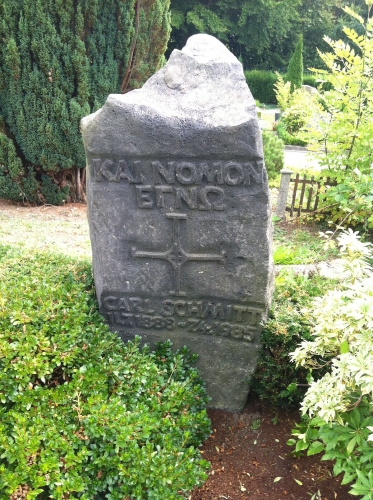 Carl Schmitt si è spento nel 1985 a Plettenberg in Westfalia alla veneranda età di 97 anni. Ciò significa che il suo sguardo non supera la «cortina di ferro» e si estende solo alla realtà della guerra fredda. Anche durante questo delicato periodo Schmitt ha continuato la sua attività di studioso e attento indagatore delle questioni di diritto internazionale dei suoi anni. Si espresse quindi sul dualismo USA-URSS, vedendo in esso una tensione verso l’unità del mondo nel segno della tecnica che avrebbe sancito l’egemonia universale di un «Unico padrone del mondo». Superando il 1989, e guardando al presente, possiamo dire che gli Stati Uniti dopo il ’91 hanno definitivamente preso scettro e globo in mano? L’American way of life è il futuro o il passato? Già Alexandre Kojève, per esempio, parlava di un nuovo attore politico e culturale e di una possibile «giapponizzazione dell’occidente».
Carl Schmitt si è spento nel 1985 a Plettenberg in Westfalia alla veneranda età di 97 anni. Ciò significa che il suo sguardo non supera la «cortina di ferro» e si estende solo alla realtà della guerra fredda. Anche durante questo delicato periodo Schmitt ha continuato la sua attività di studioso e attento indagatore delle questioni di diritto internazionale dei suoi anni. Si espresse quindi sul dualismo USA-URSS, vedendo in esso una tensione verso l’unità del mondo nel segno della tecnica che avrebbe sancito l’egemonia universale di un «Unico padrone del mondo». Superando il 1989, e guardando al presente, possiamo dire che gli Stati Uniti dopo il ’91 hanno definitivamente preso scettro e globo in mano? L’American way of life è il futuro o il passato? Già Alexandre Kojève, per esempio, parlava di un nuovo attore politico e culturale e di una possibile «giapponizzazione dell’occidente».
Lascerei da parte Kojève, a suo tempo affascinato da Schmitt ma studioso di tutt’altra provenienza e di altre ambizioni. Quanto al resto, non è vero che gli Usa siano stati i padroni solitari del mondo, se non forse negli anni Novanta quando hanno affermato che il cuore del nomos della Terra è il benessere del cittadino americano. Hanno esportato la democrazia, e in realtà il loro capitalismo, ovunque e con ogni mezzo, praticando guerre presentate come azioni di polizia internazionale, con o senza la copertura dell’Onu. Ma hanno anche trovato resistenze ovunque: i terrorismi che spesso hanno armato, e che si sono rivoltati contro di loro; ma anche soggetti geo-politici e geo-economici abbastanza forti da essere in grado di affermare le proprie pretese – Cina, Russia, Iran, la stessa Germania con la sua forza economica di esportazione, solo per fare qualche esempio –. In ogni caso, gli Usa hanno dovuto assumere, dopo la crisi del 2008, una postura difensiva: protezionismo, per difendersi da economie più dinamiche della loro; ritiro militare da aree un tempo strategiche, come parte del Medio Oriente; scarsa propensione a interventi massicci in aree di crisi (che è la vera differenza fra l’amministrazione Trump e quelle democratiche che lo hanno preceduto); severa compressione della omogenea diffusione del benessere nella loro società. Resta invariato il diritto che gli Usa rivendicano ed esercitano di intervenire ovunque nel mondo con azioni mirate contro i loro nemici, che ora come sempre essi criminalizzano. Ma oggi non sono i padroni del mondo: l’Eurasia (Cina e Russia) ha un peso pari a quello dell’Euro-America (a parte il fatto, importantissimo, che entrambe queste macro-realtà sono divise al loro interno).
Al conflitto parziale e regolato tipico dello jus publicum europaeum (1648-1914) Schmitt contrapponeva la moderna guerra discriminatoria condotta per justa causa dove il nemico è concepito come criminale sul piano legale e inferiore moralmente. Le parti in conflitto non si pensano più come justi hostes, nemici reali che si riconoscono reciprocamente come sovrani sui propri confini, ma esprimono una guerra giusta che legittima l’impiego dei moderni mezzi di annientamento. La guerra regolare e circoscritta diventa allora con i due conflitti mondiali, totale e discriminatoria alla stregua di una guerra civile su scala mondiale; una guerra non tra regolari eserciti ma in cui anche i civili e la proprietà privata diventano oggetto di annientamento attraverso i bombardamenti aerei. Eppure in questa lucida e terribile diagnosi Schmitt aveva ancora la forza della speranza e concludendo il Dialogo sul nuovo spazio scrive: «sono convinto che dopo una difficile notte di minacce provenienti da bombe atomiche e simili terrori, l’uomo un mattino si sveglierà e sarà ben felice di riconoscersi figlio di una terra saldamente fondata». La questione, invece, oggi non solo è irrisolta ma si è radicalizzata lasciandoci uno Schmitt spaesato. Come si configura una guerra in un mondo globalizzato dove «le uniche linee generate dall’economia che siano geograficamente leggibili sono quelle degli oleodotti» e la religione torna ad essere politica e fortemente identitaria?
Oggi la guerra non ha più, prevalentemente, le forme della guerra totale che ha assunto nella Seconda guerra mondiale. Ma resta una guerra discriminatoria, come fu quella: democrazia contro terrorismo, Bene contro Male (concetto reversibile, com’è evidente). Nell’età globale, poi, in un mondo reso indistinto dall’omogeneità spaziale richiesta dal capitalismo, con l’ausilio dell’elettronica, si è rafforzata la tendenza verso la guerra discriminatoria, poliziesca, asimmetrica (Stati – e i loro contractors– contro bande armate, in mezzo a popolazioni civili): una guerra globale che scavalca i confini e che piomba dall’alto ovunque siano lesi gli interessi di alcune grandi potenze. Una guerra, certo, che – da entrambi i lati – non rispetta i vecchi parametri: distinzione fra interno ed esterno, fra civile e militare, fra nemico e criminale, fra pubblico e privato, fra religione e politica. Una guerra tanto lontana dai modelli tradizionali che un generale inglese ha potuto scrivere, citando John Lennon, «war is over».
Che cosa rimane dello studio di Schmitt sulla figura del combattente partigiano nell’epoca del terrorismo islamico e delle «crociate» americane per la democrazia e la libertà? Oggi il partigiano è ancora «l’ultima sentinella della terra»?
La figura del partigiano, elaborata da Schmitt nei primissimi anni Sessanta del XX secolo, è uno dei tentativi di pensare il ‘politico’ – in sé destabilizzante – in modo concreto e relativamente stabile: il che è possibile perché il partigiano è tellurico, perché difende un territorio. Il partigiano è portatore di inimicizia reale, non assoluta: combatte per uno scopo, non per mera volontà di distruggere. Non è un terrorista, un figlio dell’universalismo, della tecnica, di una volontà di dominio globale. Se al tempo di Schmitt il partigiano poteva essere il vietcong (il che provocò a Schmitt qualche precoce simpatia a sinistra), oggi non è chiaro dove e con chi possa essere identificato.
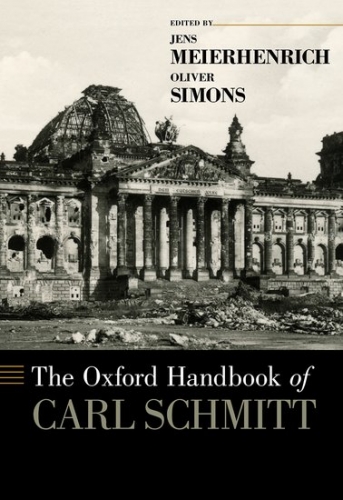 La grande questione dello Schmitt del secondo dopoguerra, concentrato su questioni di diritto internazionale, è l’urgenza di un «nuovo nomos della terra» che supplisca ai terribili sviluppi della dissoluzione dello jus publicum europaeum. Porsi il problema di un nuovo nomos significa considerare la terra come un tutto, un globo, e cercarne la suddivisione e l’ordinamento globali. Ciò sarebbe possibile solo trovando nuovi elementi di equilibrio tra le grandi potenze e superando le criminalizzazioni che hanno contraddistinto i conflitti bellici nel ’900. A scompaginare il vecchio bilanciamento tra terra e mare, di cui l’Inghilterra, potenza oceanica, si fece garante nel periodo dello jus publicum europaeum, si aggiunge, però, una nuova dimensione spaziale: l’aria. L’aria non è solo l’aereo, che sovverte le distinzioni «classiche» di «guerre en forme» terrestre e guerra di preda marittima, ma è anche lo spazio «fluido-gassoso» della Rete. Grazie ai nuovi sviluppi della politica nel mondo si rende sempre più evidente come l’era del digitale non apra solamente nuove possibilità (e nuovi problemi) per l’informazione e la comunicazione, ma si configuri, nella grande epopea degli uomini e della Terra, come l’ultima, grande, rivoluzione spaziale-globale. Come possono rispondere le categorie del nomos di Carl Schmitt al nuevo mundo del digitale?
La grande questione dello Schmitt del secondo dopoguerra, concentrato su questioni di diritto internazionale, è l’urgenza di un «nuovo nomos della terra» che supplisca ai terribili sviluppi della dissoluzione dello jus publicum europaeum. Porsi il problema di un nuovo nomos significa considerare la terra come un tutto, un globo, e cercarne la suddivisione e l’ordinamento globali. Ciò sarebbe possibile solo trovando nuovi elementi di equilibrio tra le grandi potenze e superando le criminalizzazioni che hanno contraddistinto i conflitti bellici nel ’900. A scompaginare il vecchio bilanciamento tra terra e mare, di cui l’Inghilterra, potenza oceanica, si fece garante nel periodo dello jus publicum europaeum, si aggiunge, però, una nuova dimensione spaziale: l’aria. L’aria non è solo l’aereo, che sovverte le distinzioni «classiche» di «guerre en forme» terrestre e guerra di preda marittima, ma è anche lo spazio «fluido-gassoso» della Rete. Grazie ai nuovi sviluppi della politica nel mondo si rende sempre più evidente come l’era del digitale non apra solamente nuove possibilità (e nuovi problemi) per l’informazione e la comunicazione, ma si configuri, nella grande epopea degli uomini e della Terra, come l’ultima, grande, rivoluzione spaziale-globale. Come possono rispondere le categorie del nomos di Carl Schmitt al nuevo mundo del digitale?
Se Schmitt non è solo il pensatore del conflitto indiscriminato, ma di un conflitto che è destinato a produrre un ordine, sia pure transitorio e mai neutrale, è chiaro che allora non convive bene né col capitalismo mondializzato, né con la tecnica globalizzata, né con la dimensione fluida e virtuale della Rete. In realtà, un significato contemporaneo di Schmitt sta in varie altre circostanze: inizia un’età post-globale, e per molti versi post-liberaldemocratica (ma non necessariamente post-statuale), contrassegnata da un nuovo pluralismo politico fra Grandi Spazi (non chiusi economicamente, però: questo è il problema) e quindi da un nuovo rilievo delle logiche geopolitiche e geostrategiche (di cui Schmitt è stato interprete originale e non pedissequo); nascono nuove richieste di sovranità anche in Occidente, dove prima regnava l’ideologia del mercato; la gestione della politica è sempre più spesso affidata a esecutivi forti, che agiscono attraverso «stati d’eccezione» più o meno espliciti; le dinamiche dell’esclusione interna verso i «diversi» si fanno più esplicite e il conflitto si fa più aspro (anche su questioni simboliche di fondo). Ma più ancora che di una importanza di Schmitt per decifrare il presente, è da sottolineare il suo grandissimo rilievo per decifrare la modernità e la sua crisi; per ri-codificare e ri-trascrivere la storia intellettuale, istituzionale e politica degli ultimi tre secoli (si pensi solo ai suoi libri sul parlamentarismo, sulla dittatura, sulla costituzione); per criticare genealogicamente e per decostruire il razionalismo e il pensiero dialettico. È questo rilievo critico – da assumere in modo non a-critico – a spiegare l’immensa fortuna attuale di Schmitt nella letteratura scientifica, filosofico-politica, a livello davvero mondiale, tanto a destra quanto a sinistra, tanto in Europa quanto nelle Americhe e in Asia: attraverso Schmitt si ri-pensa il rapporto fra ragione e politica, fra opacità e trasparenza, fra conflitto e ordine.






 del.icio.us
del.icio.us
 Digg
Digg
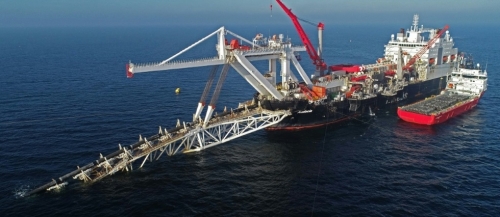
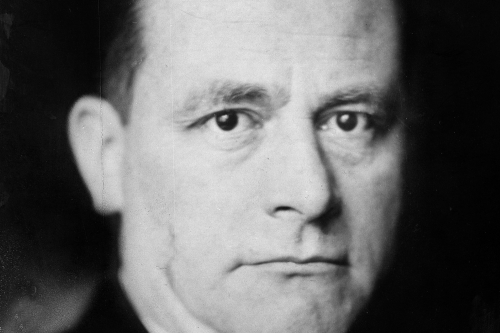


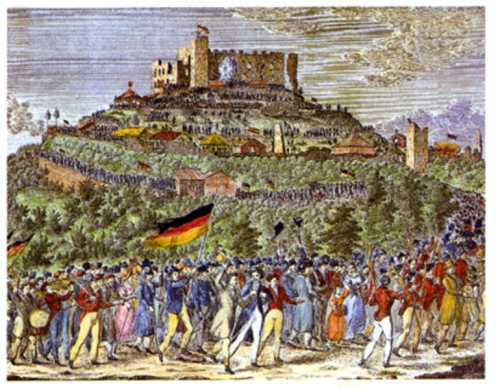
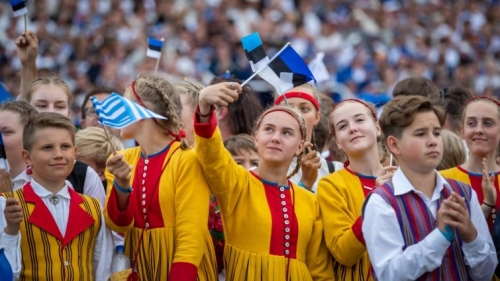
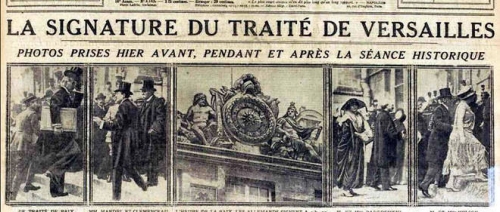
 Face à la manière dont le dit Traité de paix de Versailles a mis en opposition les peuples européens après 1919, préparant ainsi de nouveaux conflits militaires; dont l’Europe centrale a été démembrée et trois empires démantelés du jour au lendemain; dont l’Empire ottoman a été dépecé et des révolutions ont secoué la partie occidentale de l’Eurasie; dont, pour la première fois dans l’histoire de l’humanité, une nation s’est transformée en unique puissance mondiale. Donc face à l’envergure de ces bouleversements, il est étonnant de constater que peu d’impulsions de la part des cercles d’historiens n’aient été déclenchées au cours de cette année de commémoration susceptible à élaborer en profondeur un débat publique sur les causes et les effets de ces accords.
Face à la manière dont le dit Traité de paix de Versailles a mis en opposition les peuples européens après 1919, préparant ainsi de nouveaux conflits militaires; dont l’Europe centrale a été démembrée et trois empires démantelés du jour au lendemain; dont l’Empire ottoman a été dépecé et des révolutions ont secoué la partie occidentale de l’Eurasie; dont, pour la première fois dans l’histoire de l’humanité, une nation s’est transformée en unique puissance mondiale. Donc face à l’envergure de ces bouleversements, il est étonnant de constater que peu d’impulsions de la part des cercles d’historiens n’aient été déclenchées au cours de cette année de commémoration susceptible à élaborer en profondeur un débat publique sur les causes et les effets de ces accords.

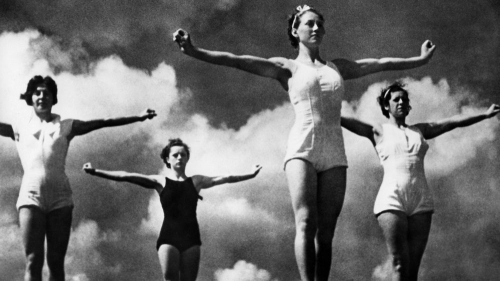
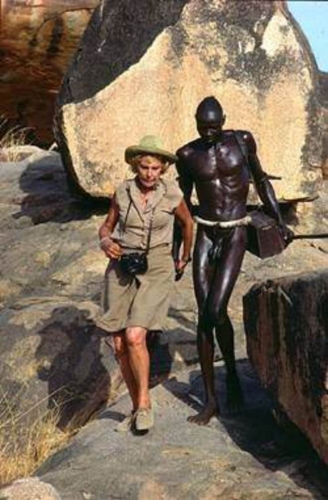 Riefenstahl was eventually released from American custody only to be imprisoned by the French shortly thereafter. The weeks she spent in Innsbruck Women’s Prison caused her to want to commit suicide. Riefenstahl was arrested at least four times in the French Zone, and was eventually transferred to the ruins of Breisach, where she suffered from hunger. She was later transferred to Königsfeld, where the poverty and hunger was as great as it was in Breisach.
Riefenstahl was eventually released from American custody only to be imprisoned by the French shortly thereafter. The weeks she spent in Innsbruck Women’s Prison caused her to want to commit suicide. Riefenstahl was arrested at least four times in the French Zone, and was eventually transferred to the ruins of Breisach, where she suffered from hunger. She was later transferred to Königsfeld, where the poverty and hunger was as great as it was in Breisach.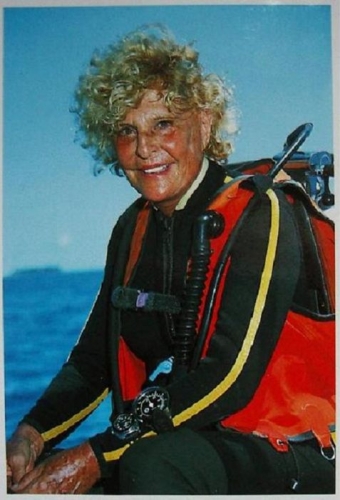 Riefenstahl was also criticized for still supporting Hitler after witnessing the massacre of approximately 30 Jewish civilians in Konskie, Poland. This incident occurred after Polish partisans in Konskie had killed and mutilated a German officer and four soldiers. While such anti-partisan incidents were common during the war, they did not indicate a German plan of genocide against the Poles or the Jews. Riefenstahl was not complicit in this anti-partisan action, and she promptly terminated her film reporting of the war after this incident.
Riefenstahl was also criticized for still supporting Hitler after witnessing the massacre of approximately 30 Jewish civilians in Konskie, Poland. This incident occurred after Polish partisans in Konskie had killed and mutilated a German officer and four soldiers. While such anti-partisan incidents were common during the war, they did not indicate a German plan of genocide against the Poles or the Jews. Riefenstahl was not complicit in this anti-partisan action, and she promptly terminated her film reporting of the war after this incident.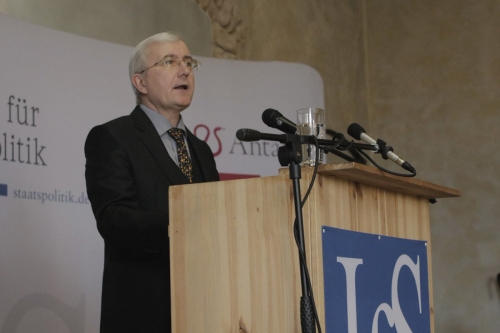

 Berlin : Nous assistons à un nouvel épisode d’une tragicomédie qui a commencé déjà il y a quelques années. La SPD socialiste de Berlin vient d’exclure officiellement son ancien « Finanzsenator » Thilo Sarrazin, 74 ans. On se souvient que Thilo Sarrazin, écrivain en vue depuis la parution de son livre de 2010 « Deutschland schafft sich ab » (littéralement : « LAllemagne se déconstruit et s’autodétruit »), émettait des thèses non conformistes, parfois critiques à l’endroit de l’islam, ce qui le plaçait derechef sous la menace d’une exclusion. La goutte qui a fait déborder le vase fut une visite remarquée lors d’une manifestation de la FPÖ autrichienne dans le cadre de la campagne électorale pour les élections européennes.
Berlin : Nous assistons à un nouvel épisode d’une tragicomédie qui a commencé déjà il y a quelques années. La SPD socialiste de Berlin vient d’exclure officiellement son ancien « Finanzsenator » Thilo Sarrazin, 74 ans. On se souvient que Thilo Sarrazin, écrivain en vue depuis la parution de son livre de 2010 « Deutschland schafft sich ab » (littéralement : « LAllemagne se déconstruit et s’autodétruit »), émettait des thèses non conformistes, parfois critiques à l’endroit de l’islam, ce qui le plaçait derechef sous la menace d’une exclusion. La goutte qui a fait déborder le vase fut une visite remarquée lors d’une manifestation de la FPÖ autrichienne dans le cadre de la campagne électorale pour les élections européennes.
 Entretemps, la FPÖ viennoise a proposé à Sarrazin de lui accorder le titre de membre d’honneur. « Thilo Sarrazin a abordé dans ses ouvrages des problèmes importants en rapport avec l’islamisation de l’Europe et son corollaire, la perte de l’identité mitteleuropéenne », écrit la chef de la section viennoise de la FPÖ Dominik Nepp sur sa page Facebook, pour justifier la proposition de son parti. « C’est pour ces raisons qu’il est réprouvé et rejeté par de vastes segments de l’établissement de gauche. Pour ma part, il sera toujours cordialement le bienvenu à Vienne » (se).
Entretemps, la FPÖ viennoise a proposé à Sarrazin de lui accorder le titre de membre d’honneur. « Thilo Sarrazin a abordé dans ses ouvrages des problèmes importants en rapport avec l’islamisation de l’Europe et son corollaire, la perte de l’identité mitteleuropéenne », écrit la chef de la section viennoise de la FPÖ Dominik Nepp sur sa page Facebook, pour justifier la proposition de son parti. « C’est pour ces raisons qu’il est réprouvé et rejeté par de vastes segments de l’établissement de gauche. Pour ma part, il sera toujours cordialement le bienvenu à Vienne » (se). 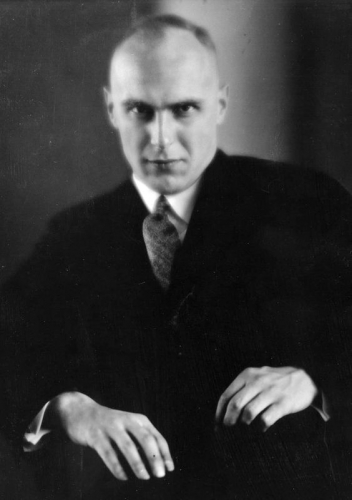
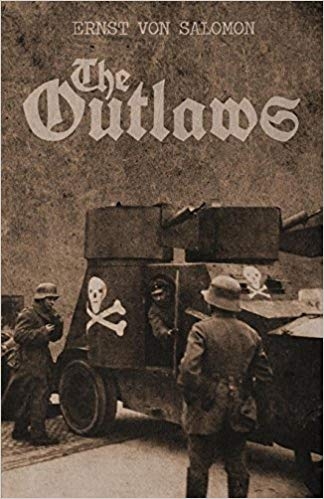 Ernst von Salomon ist in Deutschland erstmals unrühmlich bekannt geworden durch seine Teilnahme am Attentat auf den damaligen Reichsaußenminister Walther Rathenau im Sommer 1922. Nach Verbüßung seiner Zuchthausstrafe trat er für eine große Öffentlichkeit erneut in Erscheinung‚ als er im Januar 1930 bei Ernst Rowohlt sein literarisches Erstlingswerk „Die Geächteten“ veröffentlichte. Dieses stark autobiographisch geprägte Buch hatte im wesentlichen eben diesen Mord an Walther Rathenau zum Inhalt‚ durch den Ernst von Salomon als Figur der damaligen unmittelbaren Zeitgeschichte überhaupt interessant geworden war. Fortan galt er neben Ernst Jünger‚ Franz Schauwecker‚ Albrecht Erich Günther‚ Ernst Niekisch und Friedrich Hielscher als eine der Hauptfiguren des in der Literatur und der Publizistik jener Jahre vor dem Ende der Weimarer Republik wuchernden „Neuen Nationalismus“‚ wie sie selbst sich nannten. In dieser Zeit blühten in der geistigen Szene der Republik die literarischen Wortmeldungen der heute sogenannten „Konservativen Revolution“. In allen Veröffentlichungen zu diesem für die Geschichte und das Scheitern der Weimarer Republik so wichtigen Thema taucht immer wieder der Name Ernst von Salomons auf‚ ohne daß indes weiter auf ihn eingegangen wird. Nach der Katastrophe des Zweiten Weltkrieges sollte er sich erneut durch einen in der damaligen politischen Lage der Deutschen hochbrisanten Bestseller bemerkbar machen‚ der zum ersten Buchverkaufserfolg der neu entstandenen Republik wurde: „Der Fragebogen“. Die als Folge dieser Veröffentlichung aufeinanderprallenden Meinungen ließen erahnen‚ inwieweit Ernst von Salomon abermals mit seiner „Provokation“ in ein politisches Wespennest gestochen hatte. In weiten Kreisen der publizistischen Öffentlichkeit galt er nun als unverantwortlicher „Weißwäscher“ des Dritten Reiches‚ seiner Vorgeschichte und seiner Greuel. Zumal seine bitterböse Polemik gegen die amerikanische Besatzungsmacht polarisierte seine Leser. Und ein weiteres Mal in seinem Leben sollte er mit großer Resonanz in der Öffentlichkeit erscheinen. Ende der fünfziger und Anfang der sechziger Jahre engagierte sich der bis dahin als einschlägiger Propagandist des Soldatentums und des deutschen Nationalismus bekannt gewordene Ernst von Salomon publikumswirksam gegen die Wiederbewaffnung und die atomare Rüstung‚ nahm demonstrativ an den entstehenden Ostermärschen teil und ergriff Partei für als „kommunistisch“ bekannte oder benannte Organisationen und Parteien. Erstaunt und befremdet nahm die bundesdeutsche Öffentlichkeit zur Kenntnis‚ daß er einen Bogen vom „Rechts“-extremisten zum „Links“-extremisten geschlagen zu haben schien. Darin unterschied er sich eindeutig von den Verhaltensmustern der ansonsten als ehemalige „Nationalrevolutionäre“ bekannten Personen wie beispielsweise Ernst Jünger. Umgekehrt wiederum ist er in seinem Hausverlag‚ in dem die weitaus meisten Wortführer jener frühen Friedensbewegung zu Worte kamen‚ posthum wegen seiner nationalistischen Vergangenheit zur persona non grata erklärt worden. Das Andenken an ihn besteht dort ledglich in der Weitervermarktung seiner auflagenstärksten Bücher.
Ernst von Salomon ist in Deutschland erstmals unrühmlich bekannt geworden durch seine Teilnahme am Attentat auf den damaligen Reichsaußenminister Walther Rathenau im Sommer 1922. Nach Verbüßung seiner Zuchthausstrafe trat er für eine große Öffentlichkeit erneut in Erscheinung‚ als er im Januar 1930 bei Ernst Rowohlt sein literarisches Erstlingswerk „Die Geächteten“ veröffentlichte. Dieses stark autobiographisch geprägte Buch hatte im wesentlichen eben diesen Mord an Walther Rathenau zum Inhalt‚ durch den Ernst von Salomon als Figur der damaligen unmittelbaren Zeitgeschichte überhaupt interessant geworden war. Fortan galt er neben Ernst Jünger‚ Franz Schauwecker‚ Albrecht Erich Günther‚ Ernst Niekisch und Friedrich Hielscher als eine der Hauptfiguren des in der Literatur und der Publizistik jener Jahre vor dem Ende der Weimarer Republik wuchernden „Neuen Nationalismus“‚ wie sie selbst sich nannten. In dieser Zeit blühten in der geistigen Szene der Republik die literarischen Wortmeldungen der heute sogenannten „Konservativen Revolution“. In allen Veröffentlichungen zu diesem für die Geschichte und das Scheitern der Weimarer Republik so wichtigen Thema taucht immer wieder der Name Ernst von Salomons auf‚ ohne daß indes weiter auf ihn eingegangen wird. Nach der Katastrophe des Zweiten Weltkrieges sollte er sich erneut durch einen in der damaligen politischen Lage der Deutschen hochbrisanten Bestseller bemerkbar machen‚ der zum ersten Buchverkaufserfolg der neu entstandenen Republik wurde: „Der Fragebogen“. Die als Folge dieser Veröffentlichung aufeinanderprallenden Meinungen ließen erahnen‚ inwieweit Ernst von Salomon abermals mit seiner „Provokation“ in ein politisches Wespennest gestochen hatte. In weiten Kreisen der publizistischen Öffentlichkeit galt er nun als unverantwortlicher „Weißwäscher“ des Dritten Reiches‚ seiner Vorgeschichte und seiner Greuel. Zumal seine bitterböse Polemik gegen die amerikanische Besatzungsmacht polarisierte seine Leser. Und ein weiteres Mal in seinem Leben sollte er mit großer Resonanz in der Öffentlichkeit erscheinen. Ende der fünfziger und Anfang der sechziger Jahre engagierte sich der bis dahin als einschlägiger Propagandist des Soldatentums und des deutschen Nationalismus bekannt gewordene Ernst von Salomon publikumswirksam gegen die Wiederbewaffnung und die atomare Rüstung‚ nahm demonstrativ an den entstehenden Ostermärschen teil und ergriff Partei für als „kommunistisch“ bekannte oder benannte Organisationen und Parteien. Erstaunt und befremdet nahm die bundesdeutsche Öffentlichkeit zur Kenntnis‚ daß er einen Bogen vom „Rechts“-extremisten zum „Links“-extremisten geschlagen zu haben schien. Darin unterschied er sich eindeutig von den Verhaltensmustern der ansonsten als ehemalige „Nationalrevolutionäre“ bekannten Personen wie beispielsweise Ernst Jünger. Umgekehrt wiederum ist er in seinem Hausverlag‚ in dem die weitaus meisten Wortführer jener frühen Friedensbewegung zu Worte kamen‚ posthum wegen seiner nationalistischen Vergangenheit zur persona non grata erklärt worden. Das Andenken an ihn besteht dort ledglich in der Weitervermarktung seiner auflagenstärksten Bücher.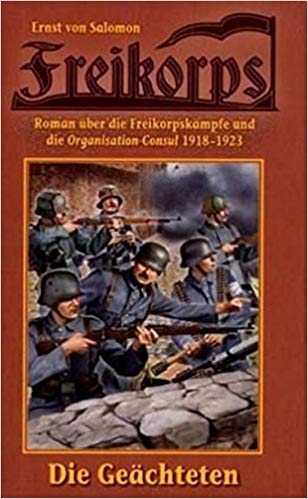 Die Frage nach den Konstanten im Denken und Handeln Ernst von Salomons, aus denen sich eventuell eine politische Zuordnung ableiten ließe, die sein ganzes Leben erfaßt, läßt sich wohl nur dann beantworten, wenn man systematisch sein politisches Weltbild zusammenträgt. Dies soll hier geschehen.
Die Frage nach den Konstanten im Denken und Handeln Ernst von Salomons, aus denen sich eventuell eine politische Zuordnung ableiten ließe, die sein ganzes Leben erfaßt, läßt sich wohl nur dann beantworten, wenn man systematisch sein politisches Weltbild zusammenträgt. Dies soll hier geschehen. Andererseits bedingte dieses Staatsverständnis aber auch zum Teil zumindest seinen aktivistischen Widerstand gegen die Weimarer Republik mit. Aus der dem Staat zugedachten Funktion heraus glaubte Ernst von Salomon, daß es für ihn auch eine „Pflicht zum Staate“ gäbe, d.h. daß er durch seinen Kampf gegen die Republik, der er ihr Staatssein in diesem Sinne absprach, eben die Vorraussetzungen schaffen würde, erneut einen Staat zu begründen. Hierbei taucht eine in seiner vita immer wiederkehrende Widersprüchlichkeit auf, die nur dadurch zu erklären scheint, daß Ernst von Salomon damals noch nicht begriffen hatte, daß dieser preußische souveräne Staat längst nicht mehr bestand, daß er auch nicht erst mit der Gründung der Republik verschwunden war, sondern weit vorher schon. Als seine Erziehung abgeschlossen war und er Kenntnis von politischen Erscheinungen nahm, war unglücklicherweise just jener Augenblick, in dem nach vierjähriger Kriegswirtschaft die Republik ausgerufen wurde. So machte er die Staatsform der Republik für etwas verantwortlich, was schon seit Jahrzehnten vorhanden war, und so kam er nicht auf den Gedanken, daß er selbst ein Relikt mit anachronistischem Staatsverständnis darstellt.
Andererseits bedingte dieses Staatsverständnis aber auch zum Teil zumindest seinen aktivistischen Widerstand gegen die Weimarer Republik mit. Aus der dem Staat zugedachten Funktion heraus glaubte Ernst von Salomon, daß es für ihn auch eine „Pflicht zum Staate“ gäbe, d.h. daß er durch seinen Kampf gegen die Republik, der er ihr Staatssein in diesem Sinne absprach, eben die Vorraussetzungen schaffen würde, erneut einen Staat zu begründen. Hierbei taucht eine in seiner vita immer wiederkehrende Widersprüchlichkeit auf, die nur dadurch zu erklären scheint, daß Ernst von Salomon damals noch nicht begriffen hatte, daß dieser preußische souveräne Staat längst nicht mehr bestand, daß er auch nicht erst mit der Gründung der Republik verschwunden war, sondern weit vorher schon. Als seine Erziehung abgeschlossen war und er Kenntnis von politischen Erscheinungen nahm, war unglücklicherweise just jener Augenblick, in dem nach vierjähriger Kriegswirtschaft die Republik ausgerufen wurde. So machte er die Staatsform der Republik für etwas verantwortlich, was schon seit Jahrzehnten vorhanden war, und so kam er nicht auf den Gedanken, daß er selbst ein Relikt mit anachronistischem Staatsverständnis darstellt.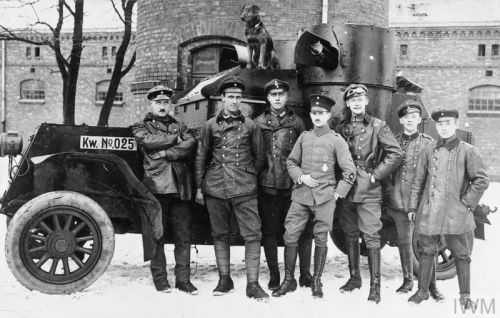
 Was die unentwirrbare Vermischung solcher Gedanken noch verstärkte, war, daß Ernst von Salomon im Verlaufe seiner aktivistischen Phase über den souveränen Staat und das Volk hinweg noch eine dritte Solidarisierungsebene fand, die weder mit dem einen noch mit dem anderen etwas zu tun hatte. Dies war das frontenübergreifende Gemeinschaftsgefühl des sogenannten „Frontsozialismus“. Aus allen Kreisen und Schichten stammend, lag ihrem Empfinden und ihrem Verhalten, ebenso wie dem ihrer Jahrgangskameraden, die den entgegengesetzten Weg in die kommunistischen Truppen einschlugen, ein gemeinsames Generationserlebnis zugrunde. Dies war das Empfinden, daß mit dem Ausbruch des Krieges 1914 eine Epoche ihren Abschluß gefunden hätte, ähnlich wie dies auch bei den vergleichbaren Generationen in den anderen beteiligten Ländern begriffen wurde. Der Krieg bewirkte ein Gefühl der Auflösung sämtlicher Entzweiungen und des Durchbruchs zu einem neuen Prinzip des nationalen Zusammenlebens, was sich in dem Empfinden der Frontsoldaten noch unmittelbarer Ausdruck verschaffte. Das wurde begriffen als eine Antwort auf die Fragestellungen der vorherigen Epoche, die die Ausweichmöglichkeiten, vor allem die Jugendbewegung und der Expressionismus, nur unzureichend hatten verdrängen können. Und wo diese Fragestellungen nicht so prägnant oder auch überhaupt nicht vorhanden gewesen waren, der grenzenlose Krieg mußte sie zwangsläufig hervorrufen, denn „das Meer des vergossenen Blutes“, wie Ernst Niekisch schrieb, war nur zu ertragen, wenn sich die Aussicht auf eine neue, „höhere und `bessere΄ Ordnungswelt“ eröffnete. Um die Opfer des Krieges nicht als gänzlich sinnlos erscheinen zu lassen, mußte also ein Sinn dahinter gefunden werden, mußte am Ende all dieser Opfer stehen, und wo er es nicht tat, da war der Abgrund schier bodenlos, in den der Geist stürzte. Als aber am Ende des Krieges keine Wandlung eintrat, als die bürgerliche Ordnung weiterbestand und gar „den Sieg als Bestätigung ihrer selbst ausdeutete und feierte“, da öffnete sich eben dieser befürchtete Abgrund vor den Frontsoldaten wie vor den Kadetten, die in einem entsprechenden Geist erzogen worden waren und sich deshalb so nahtlos unter erstere einreihen konnten: „Das Ende des Krieges hat keinerlei eindeutige Lösung erbracht, hat keine Antwort gegeben, sondern hat nur die Fragestellung verschärft.“ Solche Ideen wiederum führten in Verbindung mit einer Enttäuschung über den angeblich „materialistischen“ Charakter der „Revolution“ von 1918/19 zu einer arroganten Position gegenüber den „Massen“, die doch andererseits das „Volk“ waren, das in seinen völkisch-nationalen Vorstellungen eine Rolle spielte. Und dieses elitäre Bewußtsein meinte eine Kategorie Menschen, die aktivistisch, idealistisch und „unbedingt“ handeln würden, im Gegensatz zum „bourgeoisen“ Bürger. Dieses Verbundenheitsgefühl aber bezog sich nicht ausschließlich auf deutsch Mitstreiter, sondern – auf einer gänzlich anderen Ebene – auf jeden Menschen, der dazugehören würde.
Was die unentwirrbare Vermischung solcher Gedanken noch verstärkte, war, daß Ernst von Salomon im Verlaufe seiner aktivistischen Phase über den souveränen Staat und das Volk hinweg noch eine dritte Solidarisierungsebene fand, die weder mit dem einen noch mit dem anderen etwas zu tun hatte. Dies war das frontenübergreifende Gemeinschaftsgefühl des sogenannten „Frontsozialismus“. Aus allen Kreisen und Schichten stammend, lag ihrem Empfinden und ihrem Verhalten, ebenso wie dem ihrer Jahrgangskameraden, die den entgegengesetzten Weg in die kommunistischen Truppen einschlugen, ein gemeinsames Generationserlebnis zugrunde. Dies war das Empfinden, daß mit dem Ausbruch des Krieges 1914 eine Epoche ihren Abschluß gefunden hätte, ähnlich wie dies auch bei den vergleichbaren Generationen in den anderen beteiligten Ländern begriffen wurde. Der Krieg bewirkte ein Gefühl der Auflösung sämtlicher Entzweiungen und des Durchbruchs zu einem neuen Prinzip des nationalen Zusammenlebens, was sich in dem Empfinden der Frontsoldaten noch unmittelbarer Ausdruck verschaffte. Das wurde begriffen als eine Antwort auf die Fragestellungen der vorherigen Epoche, die die Ausweichmöglichkeiten, vor allem die Jugendbewegung und der Expressionismus, nur unzureichend hatten verdrängen können. Und wo diese Fragestellungen nicht so prägnant oder auch überhaupt nicht vorhanden gewesen waren, der grenzenlose Krieg mußte sie zwangsläufig hervorrufen, denn „das Meer des vergossenen Blutes“, wie Ernst Niekisch schrieb, war nur zu ertragen, wenn sich die Aussicht auf eine neue, „höhere und `bessere΄ Ordnungswelt“ eröffnete. Um die Opfer des Krieges nicht als gänzlich sinnlos erscheinen zu lassen, mußte also ein Sinn dahinter gefunden werden, mußte am Ende all dieser Opfer stehen, und wo er es nicht tat, da war der Abgrund schier bodenlos, in den der Geist stürzte. Als aber am Ende des Krieges keine Wandlung eintrat, als die bürgerliche Ordnung weiterbestand und gar „den Sieg als Bestätigung ihrer selbst ausdeutete und feierte“, da öffnete sich eben dieser befürchtete Abgrund vor den Frontsoldaten wie vor den Kadetten, die in einem entsprechenden Geist erzogen worden waren und sich deshalb so nahtlos unter erstere einreihen konnten: „Das Ende des Krieges hat keinerlei eindeutige Lösung erbracht, hat keine Antwort gegeben, sondern hat nur die Fragestellung verschärft.“ Solche Ideen wiederum führten in Verbindung mit einer Enttäuschung über den angeblich „materialistischen“ Charakter der „Revolution“ von 1918/19 zu einer arroganten Position gegenüber den „Massen“, die doch andererseits das „Volk“ waren, das in seinen völkisch-nationalen Vorstellungen eine Rolle spielte. Und dieses elitäre Bewußtsein meinte eine Kategorie Menschen, die aktivistisch, idealistisch und „unbedingt“ handeln würden, im Gegensatz zum „bourgeoisen“ Bürger. Dieses Verbundenheitsgefühl aber bezog sich nicht ausschließlich auf deutsch Mitstreiter, sondern – auf einer gänzlich anderen Ebene – auf jeden Menschen, der dazugehören würde.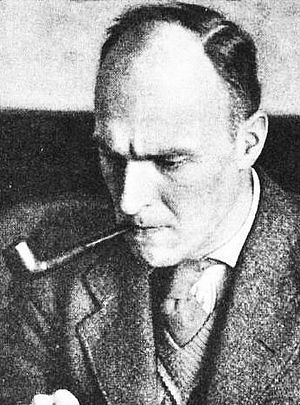 Sozialismus und Liberalismus
Sozialismus und Liberalismus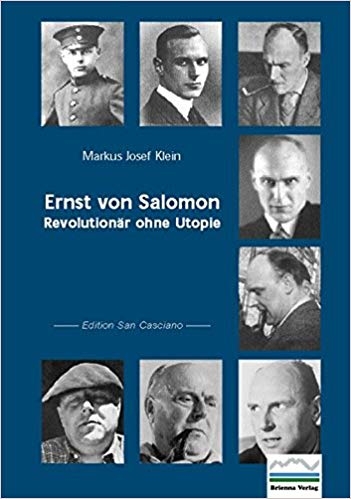
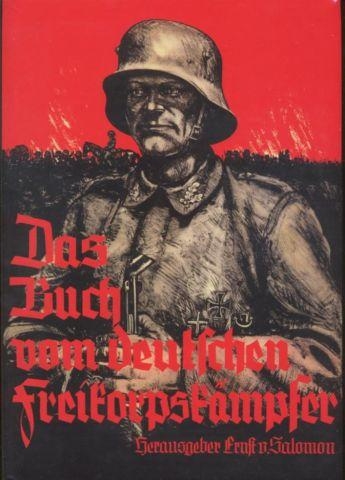

 Acquis au racialisme scientifique, il popularisa le concept du Blut und Boden (Sang et Sol), espérant abolir une société industrielle fermée au monde des affaires afin de la remplacer par une société organique prenant sa base sur un système de nobilité agreste héréditaire.
Acquis au racialisme scientifique, il popularisa le concept du Blut und Boden (Sang et Sol), espérant abolir une société industrielle fermée au monde des affaires afin de la remplacer par une société organique prenant sa base sur un système de nobilité agreste héréditaire.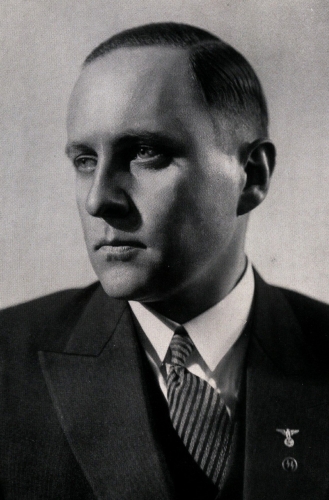 Most widely held works
Most widely held works 
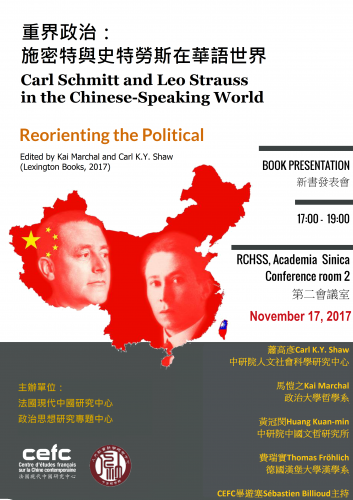
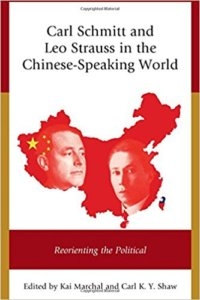 Carl Schmitt and Leo Strauss are extremely popular in China, especially in Mainland China—this is no longer a secret in the Western academia. As early as 2003, Stanley Rosen had already told the Boston Globe that “A very, very significant circle of Strauss admirers has sprung up, of all places, China.”
Carl Schmitt and Leo Strauss are extremely popular in China, especially in Mainland China—this is no longer a secret in the Western academia. As early as 2003, Stanley Rosen had already told the Boston Globe that “A very, very significant circle of Strauss admirers has sprung up, of all places, China.”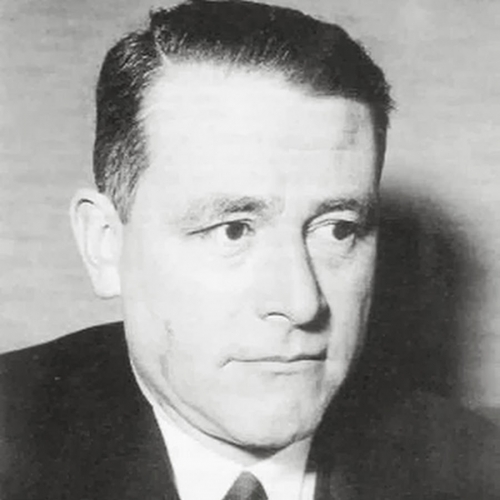
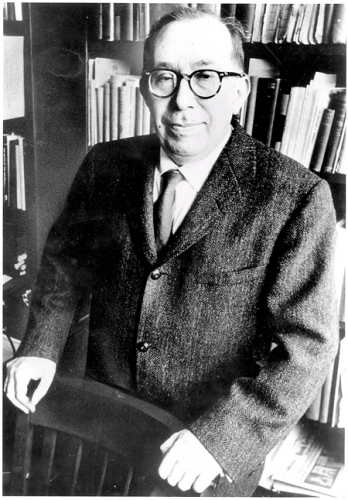

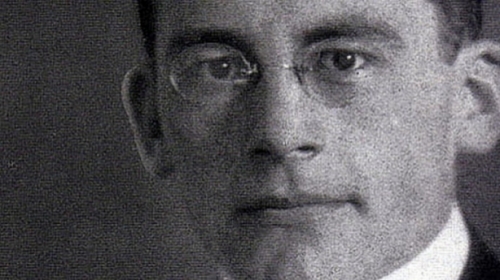
 De l’œuvre proprement juridique du jeune Carl Schmitt, disons de celle d’avant 1933, nous possédons en français Théorie de la constitution (1928, PUF 1993), La valeur de l’État et la signification de l’individu (1914, Droz 2003), mais il nous manquait jusqu’aujourd’hui un petit ouvrage de 1912 intitulé Loi et jugement, qu’Olivier Beaud, dans sa préface à l’édition française de Théorie de la constitution, qualifie de « véritable recherche de théorie du droit abordant les questions les plus fondamentales ».
De l’œuvre proprement juridique du jeune Carl Schmitt, disons de celle d’avant 1933, nous possédons en français Théorie de la constitution (1928, PUF 1993), La valeur de l’État et la signification de l’individu (1914, Droz 2003), mais il nous manquait jusqu’aujourd’hui un petit ouvrage de 1912 intitulé Loi et jugement, qu’Olivier Beaud, dans sa préface à l’édition française de Théorie de la constitution, qualifie de « véritable recherche de théorie du droit abordant les questions les plus fondamentales ».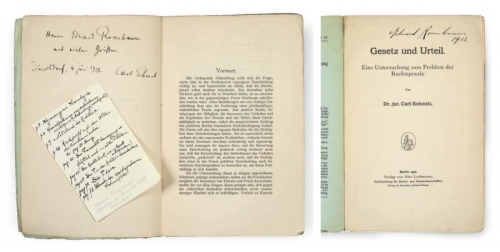
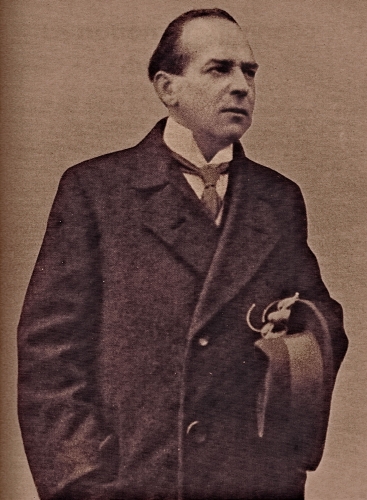


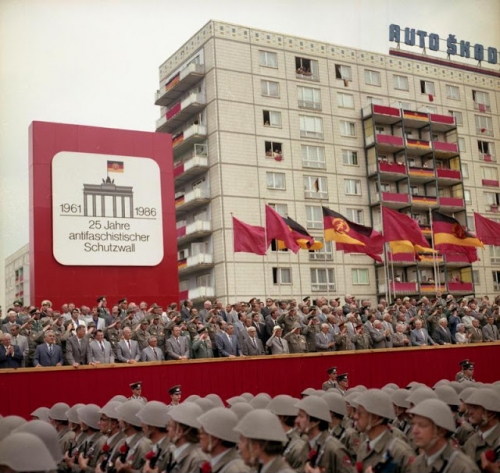
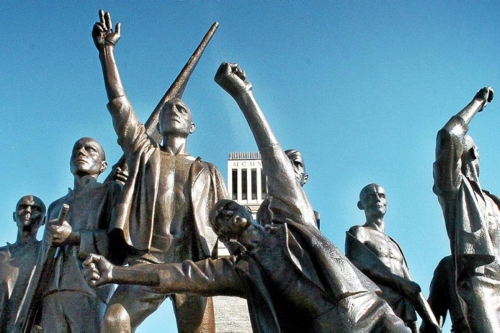
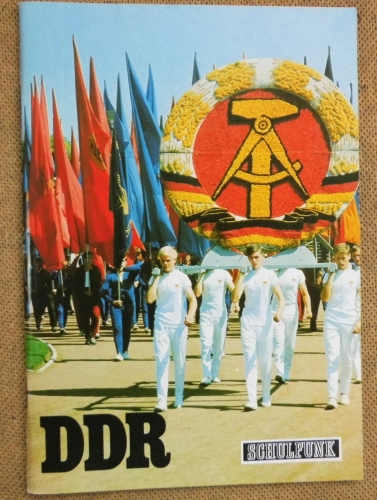
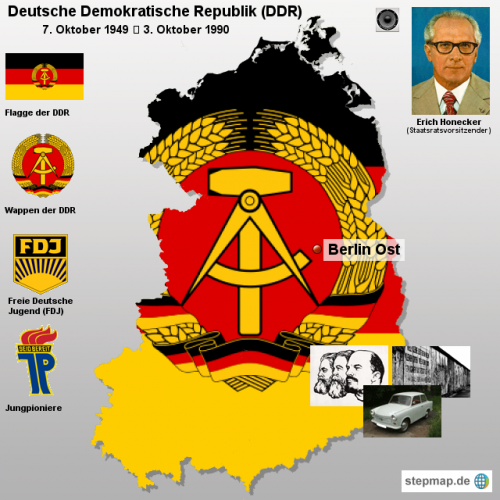
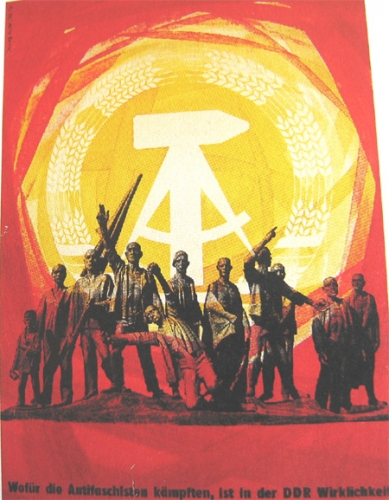
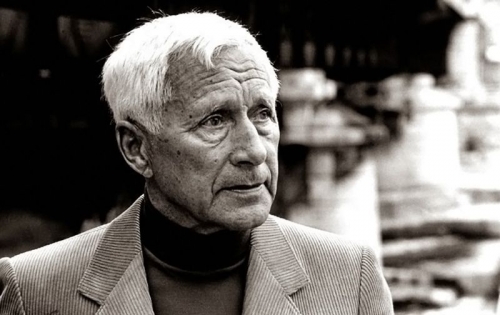
 Il est étrange que la fermeté du tracé psychologique de l’anarque ait pu laisser place au doute, voire à la haine qui jette l’anathème sur toute une œuvre. Il faut chercher ailleurs les raisons de l’incompatibilité de nature organique entre le texte jungerien et son temps – qui ne cesse d’être le nôtre, qui se propage, joue les prolongations. Pour s’y aider, on peut se représenter un décor plus ordinaire que le cadastre imaginaire d’Eumeswil (c’est le grand ordinaire, précisément, qu’il convient de planter) : une soirée de beuverie entre amis et, allant de l’un à l’autre, riant de bon cœur, l’un d’eux, alcoolique abstinent depuis de nombreuses années désormais. Son cas est connu de tous, on aurait pu se dispenser de l’inviter, mais nul ne dispose de la force morale pour en décider. Et c’est – ce fut – un bon ami à nous. Quelle raison de l’exclure ? Son regard bienveillant qui s’attarde sur notre négligé qui finira de sombrer dans l’obscène, l’alcool aidant au fil des heures, rend insupportable sa présence. Mais nul n’a le courage d’en tirer les conséquences. D’ailleurs, quelqu’un l’a-t-il vu depuis tout à l’heure ? L’anarque s’est retiré, personne ne l’a vu faire. Il nous laisse à notre écœurement, à notre haine de nous-mêmes. Salaud !
Il est étrange que la fermeté du tracé psychologique de l’anarque ait pu laisser place au doute, voire à la haine qui jette l’anathème sur toute une œuvre. Il faut chercher ailleurs les raisons de l’incompatibilité de nature organique entre le texte jungerien et son temps – qui ne cesse d’être le nôtre, qui se propage, joue les prolongations. Pour s’y aider, on peut se représenter un décor plus ordinaire que le cadastre imaginaire d’Eumeswil (c’est le grand ordinaire, précisément, qu’il convient de planter) : une soirée de beuverie entre amis et, allant de l’un à l’autre, riant de bon cœur, l’un d’eux, alcoolique abstinent depuis de nombreuses années désormais. Son cas est connu de tous, on aurait pu se dispenser de l’inviter, mais nul ne dispose de la force morale pour en décider. Et c’est – ce fut – un bon ami à nous. Quelle raison de l’exclure ? Son regard bienveillant qui s’attarde sur notre négligé qui finira de sombrer dans l’obscène, l’alcool aidant au fil des heures, rend insupportable sa présence. Mais nul n’a le courage d’en tirer les conséquences. D’ailleurs, quelqu’un l’a-t-il vu depuis tout à l’heure ? L’anarque s’est retiré, personne ne l’a vu faire. Il nous laisse à notre écœurement, à notre haine de nous-mêmes. Salaud !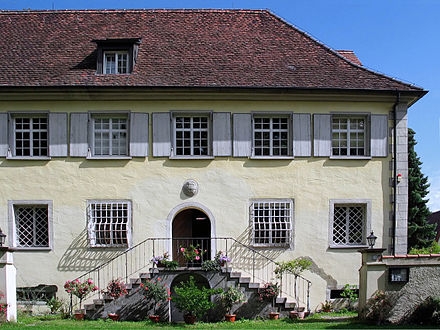

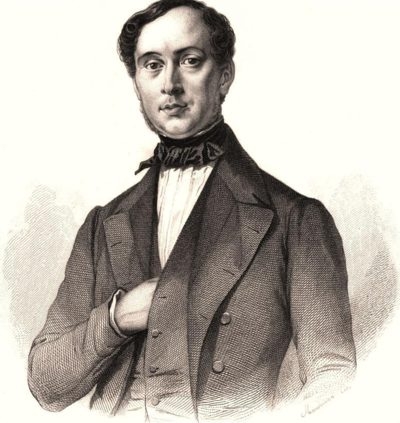
 La deuxième partie de l'ouvrage est consacrée aux textes proprement dits de Carl Schmitt mais il faut attendre la page 157 de l'ouvrage, dans une étude intitulée Catholicisme romain et forme politique datant de 1923, pour que le nom de Cortés apparaisse, d'ailleurs de façon tout à fait anecdotique. Cette étude, plus ample que la première, intitulée Visibilité de l’Église et qui ne nous intéresse que par sa mention d'une paradoxale quoique rigoureuse légalité du Diable (4), mentionne donc le nom de l'essayiste espagnol et, ô surprise, celui d'Ernest Hello (cf. p. 180) mais, plus qu'une approche de Cortés, elle s'intéresse à l'absence de toute forme de représentation symbolique dans le monde technico-économique contemporain, à la différence de ce qui se produisait dans la société occidentale du Moyen Âge. Alors, la représentation, ce que nous pourrions sans trop de mal je crois appeler la visibilité au sens que Schmitt donne à ce mot, conférait «à la personne du représentant une dignité propre, car le représentant d'une valeur élevée ne [pouvait] être dénué de valeur» tandis que, désormais, «on ne peut pas représenter devant des automates ou des machines, aussi peu qu'eux-mêmes ne peuvent représenter ou être représentés» car, si l’État «est devenu Léviathan, c'est qu'il a disparu du monde du représentatif». Carl Schmitt fait ainsi remarquer que «l'absence d'image et de représentation de l'entreprise moderne va chercher ses symboles dans une autre époque, car la machine est sans tradition, et elle est si peu capable d'images que même la République russe des soviets n'a pas trouvé d'autre symbole», pour l'illustration de ce que nous pourrions considérer comme étant ses armoiries, «que la faucille et le marteau» (p. 170). Suit une très belle analyse de la rhétorique de Bossuet, qualifiée de «discours représentatif» qui «ne passe pas son temps à discuter et à raisonner» et qui est plus que de la musique : «elle est une dignité humaine rendue visible par la rationalité du langage qui se forme», ce qui suppose «une hiérarchie, car la résonance spirituelle de la grande rhétorique procède de la foi en la représentation que revendique l'orateur» (p. 172), autrement dit un monde supérieur garant de celui où faire triompher un discours qui s'ente lui-même sur la Parole. Le décisionnisme, vu de cette manière, pourrait n'être qu'un pis-aller, une tentative, sans doute désespérée, de fonder ex abrupto une légitimité en prenant de vitesse l'ennemi qui, lui, n'aura pas su ou voulu tirer les conséquences de la mort de Dieu dans l'hic et nunc d'un monde quadrillé et soumis par la Machine, fruit tavelé d'une Raison devenue folle et tournant à vide. Il y a donc quelque chose de prométhéen dans la décision radicale de celui qui décide d'imposer sa vision du monde, dictateur ou empereur-Dieu régnant sur le désert qu'est la réalité profonde du monde moderne.
La deuxième partie de l'ouvrage est consacrée aux textes proprement dits de Carl Schmitt mais il faut attendre la page 157 de l'ouvrage, dans une étude intitulée Catholicisme romain et forme politique datant de 1923, pour que le nom de Cortés apparaisse, d'ailleurs de façon tout à fait anecdotique. Cette étude, plus ample que la première, intitulée Visibilité de l’Église et qui ne nous intéresse que par sa mention d'une paradoxale quoique rigoureuse légalité du Diable (4), mentionne donc le nom de l'essayiste espagnol et, ô surprise, celui d'Ernest Hello (cf. p. 180) mais, plus qu'une approche de Cortés, elle s'intéresse à l'absence de toute forme de représentation symbolique dans le monde technico-économique contemporain, à la différence de ce qui se produisait dans la société occidentale du Moyen Âge. Alors, la représentation, ce que nous pourrions sans trop de mal je crois appeler la visibilité au sens que Schmitt donne à ce mot, conférait «à la personne du représentant une dignité propre, car le représentant d'une valeur élevée ne [pouvait] être dénué de valeur» tandis que, désormais, «on ne peut pas représenter devant des automates ou des machines, aussi peu qu'eux-mêmes ne peuvent représenter ou être représentés» car, si l’État «est devenu Léviathan, c'est qu'il a disparu du monde du représentatif». Carl Schmitt fait ainsi remarquer que «l'absence d'image et de représentation de l'entreprise moderne va chercher ses symboles dans une autre époque, car la machine est sans tradition, et elle est si peu capable d'images que même la République russe des soviets n'a pas trouvé d'autre symbole», pour l'illustration de ce que nous pourrions considérer comme étant ses armoiries, «que la faucille et le marteau» (p. 170). Suit une très belle analyse de la rhétorique de Bossuet, qualifiée de «discours représentatif» qui «ne passe pas son temps à discuter et à raisonner» et qui est plus que de la musique : «elle est une dignité humaine rendue visible par la rationalité du langage qui se forme», ce qui suppose «une hiérarchie, car la résonance spirituelle de la grande rhétorique procède de la foi en la représentation que revendique l'orateur» (p. 172), autrement dit un monde supérieur garant de celui où faire triompher un discours qui s'ente lui-même sur la Parole. Le décisionnisme, vu de cette manière, pourrait n'être qu'un pis-aller, une tentative, sans doute désespérée, de fonder ex abrupto une légitimité en prenant de vitesse l'ennemi qui, lui, n'aura pas su ou voulu tirer les conséquences de la mort de Dieu dans l'hic et nunc d'un monde quadrillé et soumis par la Machine, fruit tavelé d'une Raison devenue folle et tournant à vide. Il y a donc quelque chose de prométhéen dans la décision radicale de celui qui décide d'imposer sa vision du monde, dictateur ou empereur-Dieu régnant sur le désert qu'est la réalité profonde du monde moderne. Voilà bien ce qui fascine Carl Schmitt lorsqu'il lit la prose de Donoso Cortés, éblouissante de virtuosité comme a pu le remarquer, selon lui et «avec un jugement critique sûr» (p. 217), un Barbey d'Aurevilly : son intransigeance radicale, non pas certes sur les arrangements circonstanciels politiques, car il fut un excellent diplomate, que sur la nécessité, pour le temps qui vient, de prendre les décisions qui s'imposent, aussi dures qu'elles puissent paraître, Carl Schmitt faisant à ce titre remarquer que Donoso Cortés est l'auteur de «la phrase la plus extrême du XIXe siècle : le jour des anéantissements [ou plutôt : des négations] radicaux et des affirmations souveraines arrive», «llega el dia de las negaciones radicales y des las afirmaciones soberanas» (p. 218), une phrase dont chacun des termes est bien évidemment plus que jamais valable à notre époque, mais qui est devenue parfaitement inaudible.
Voilà bien ce qui fascine Carl Schmitt lorsqu'il lit la prose de Donoso Cortés, éblouissante de virtuosité comme a pu le remarquer, selon lui et «avec un jugement critique sûr» (p. 217), un Barbey d'Aurevilly : son intransigeance radicale, non pas certes sur les arrangements circonstanciels politiques, car il fut un excellent diplomate, que sur la nécessité, pour le temps qui vient, de prendre les décisions qui s'imposent, aussi dures qu'elles puissent paraître, Carl Schmitt faisant à ce titre remarquer que Donoso Cortés est l'auteur de «la phrase la plus extrême du XIXe siècle : le jour des anéantissements [ou plutôt : des négations] radicaux et des affirmations souveraines arrive», «llega el dia de las negaciones radicales y des las afirmaciones soberanas» (p. 218), une phrase dont chacun des termes est bien évidemment plus que jamais valable à notre époque, mais qui est devenue parfaitement inaudible.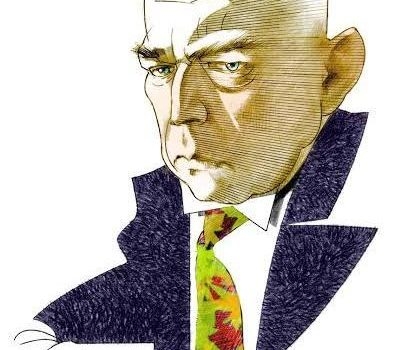
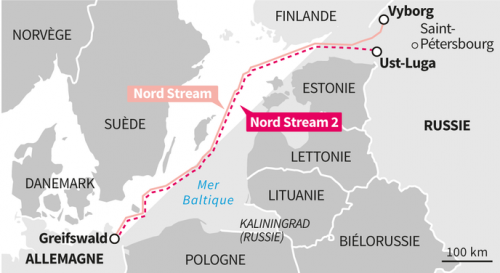
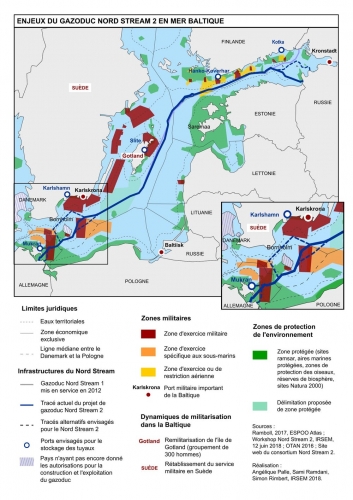
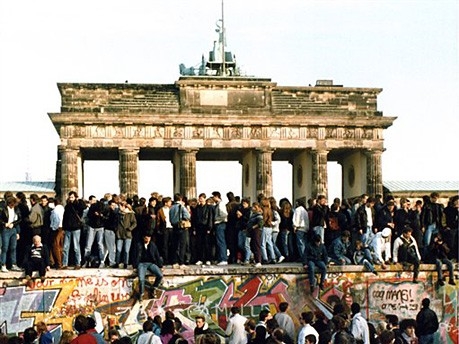
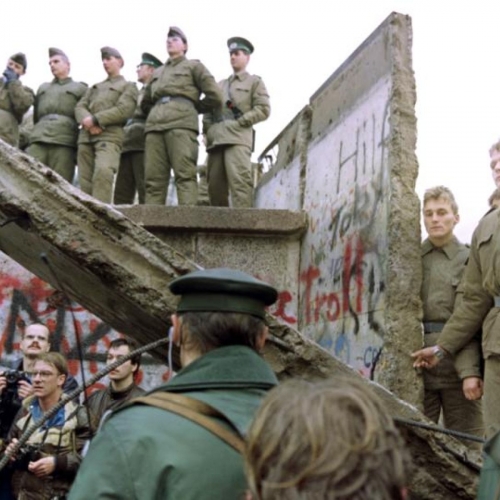
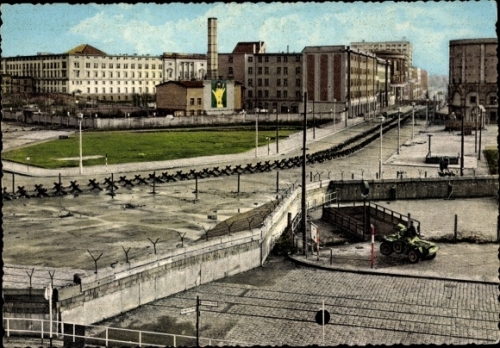
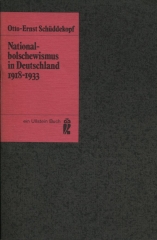 Sur le Kurfürstendamm, des étudiants iraniens manifestaient contre le Shah. Dans une librairie, je m’étais procuré un exemplaire du fameux livre d’Otto-Ernst Schüddekopf sur le national-bolchevisme de l’époque de la République de Weimar, un témoignage incontournable ; un quart d’heure plus tard, je m’attable à une terrasse pour compulser mes nouveaux bouquins. Je suis assis à une table collective et une dame âgée, souriante, arrive et me dit avec toute la gouaille berlinoise : « Bonjour jeune homme, accepteriez-vous qu’une vieille tarte (« eine alte Klatschtante ») comme moi s’assoie en face de vous ? ». Elle était d’une sombre élégance, coiffée d’un chapeau à la tyrolienne orné d’une superbe plume noire. Nous entamons une conversation et je vois qu’un sourire approbateur se dessine sur son visage jovial quand elle voit le type de littérature historique que je m’étais choisi. Elle a voulu me payer les bouquins. Et elle insistait. Confus, je décline son offre. Elle se lève me salue et laisse 30 marks sur la table. Je veux les lui rendre, elle s’éclipse en me lançant un « Ach, Quatsch ! » chaleureux… A Berlin-Est, je vois circuler de belles automobiles tchèques, à l’esthétique vintage, des Tatra. Sur la Place de la Gendarmerie, en ruine, des arbres avaient poussé sur les marches des deux églises, l’allemande et la huguenote.
Sur le Kurfürstendamm, des étudiants iraniens manifestaient contre le Shah. Dans une librairie, je m’étais procuré un exemplaire du fameux livre d’Otto-Ernst Schüddekopf sur le national-bolchevisme de l’époque de la République de Weimar, un témoignage incontournable ; un quart d’heure plus tard, je m’attable à une terrasse pour compulser mes nouveaux bouquins. Je suis assis à une table collective et une dame âgée, souriante, arrive et me dit avec toute la gouaille berlinoise : « Bonjour jeune homme, accepteriez-vous qu’une vieille tarte (« eine alte Klatschtante ») comme moi s’assoie en face de vous ? ». Elle était d’une sombre élégance, coiffée d’un chapeau à la tyrolienne orné d’une superbe plume noire. Nous entamons une conversation et je vois qu’un sourire approbateur se dessine sur son visage jovial quand elle voit le type de littérature historique que je m’étais choisi. Elle a voulu me payer les bouquins. Et elle insistait. Confus, je décline son offre. Elle se lève me salue et laisse 30 marks sur la table. Je veux les lui rendre, elle s’éclipse en me lançant un « Ach, Quatsch ! » chaleureux… A Berlin-Est, je vois circuler de belles automobiles tchèques, à l’esthétique vintage, des Tatra. Sur la Place de la Gendarmerie, en ruine, des arbres avaient poussé sur les marches des deux églises, l’allemande et la huguenote.